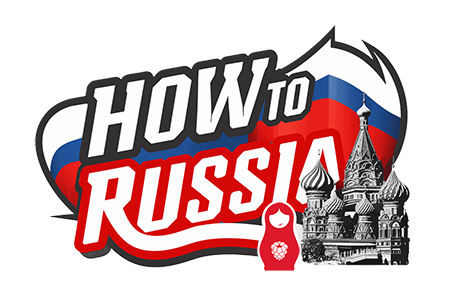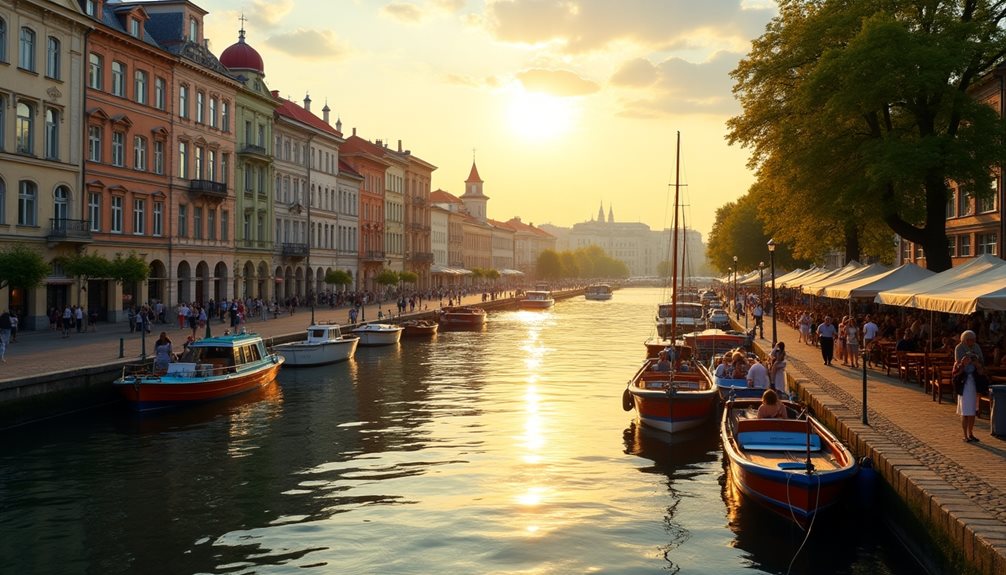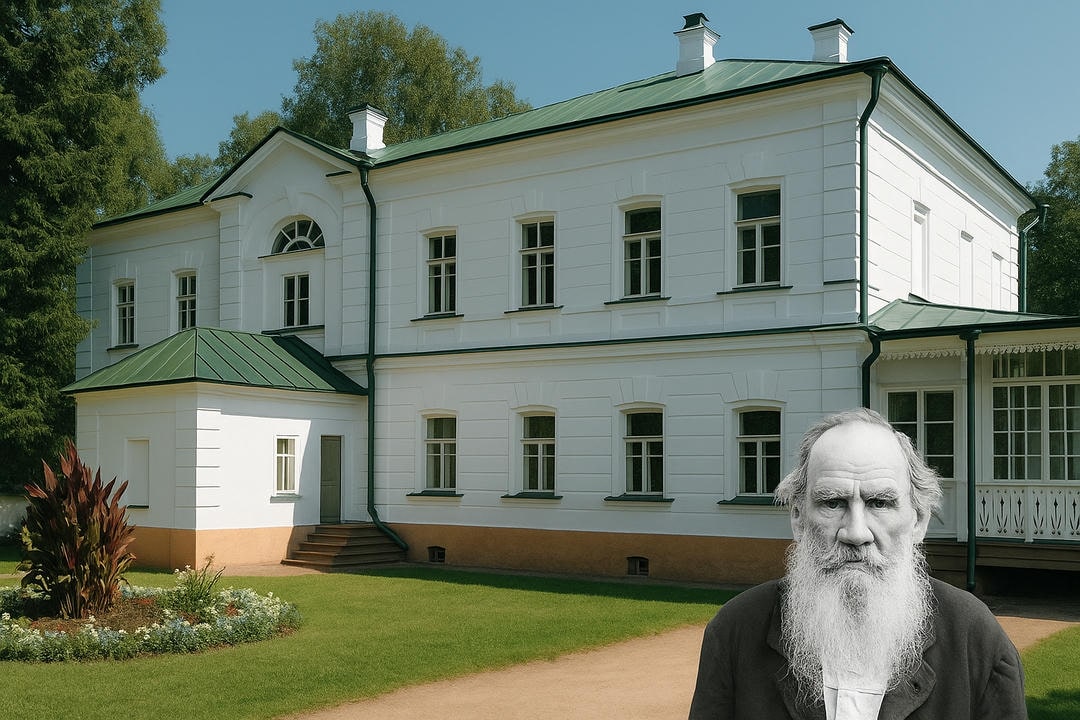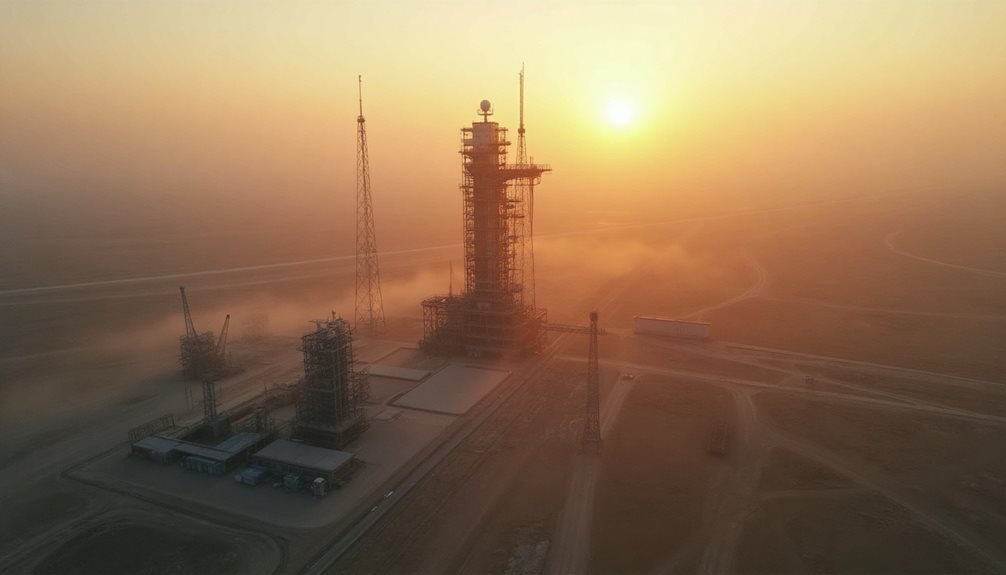The largest cities in Russia offer a window into the country’s diverse landscape and history. Moscow, as the capital, plays a pivotal role in governance and economy. St. Petersburg, with its artistic legacy, contrasts sharply with the industrial essence of Yekaterinburg. Meanwhile, Novosibirsk and Nizhny Novgorod represent important regional centers. Finally, Kazan stands out for its cultural significance. Each city holds unique attributes that shape the nation’s identity. What influences drive their development?
Moscow: The Heart of Russia
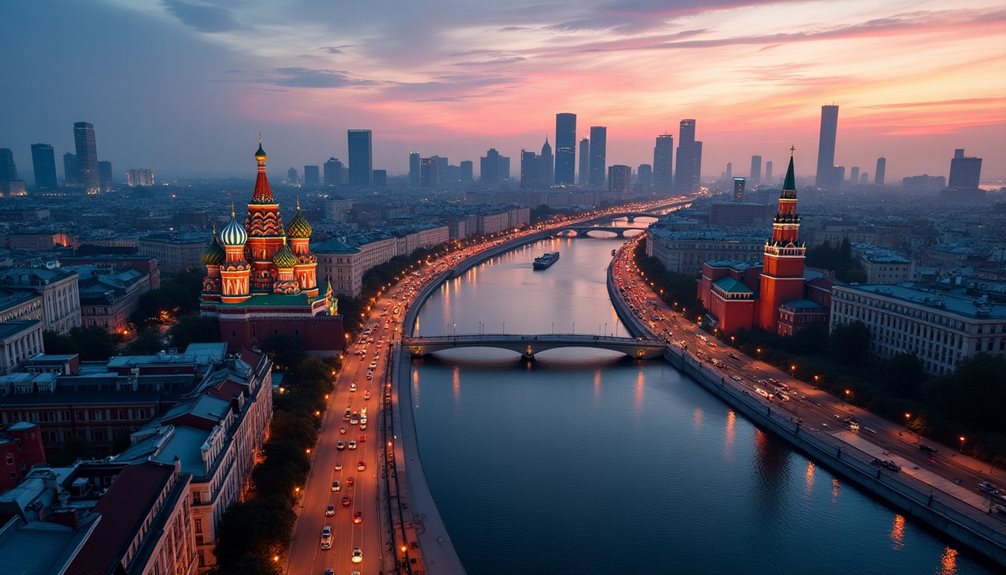
Moscow, the capital city of Russia, is a vibrant hub of political, economic, and cultural activities. The city’s rich history and diverse architecture make it a must-visit destination for travelers seeking to explore the essence of Russia.
Historical and Architectural Marvels
Moscow’s architecture is a blend of historic and modern styles, reflecting its rich heritage and artistic legacy. The Kremlin, a UNESCO World Heritage site, is a testament to this diversity. Originally constructed of wood, it was rebuilt in white stone in the 14th century and later in red brick in the late 15th century by Italian architects. Its architecture encompasses various styles, including Byzantine, Russian Baroque, and classical, showcasing the city’s evolution over centuries.
Another iconic landmark is St. Basil’s Cathedral, known for its colorful onion domes and intricate design. The cathedral, located in Red Square, is a symbol of Russia’s unique architectural style and a popular tourist attraction.
Modern Infrastructure and Transportation
Moscow’s efficient transportation system, including an extensive metro network, connects various districts, making it easy for residents and visitors to navigate the city. The metro stations themselves are architectural marvels, adorned with intricate mosaics, sculptures, and chandeliers, reflecting the city’s commitment to art and design.
The city’s infrastructure supports daily commutes and fosters an environment conducive to growth and freedom of expression. Recent architectural projects, such as the Garage Museum of Contemporary Art and Zaryadye Park, showcase Moscow’s commitment to innovation and sustainability. These projects aim to create accessible environments that promote cultural exchange and environmental awareness.
St. Petersburg: The Cultural Capital
St. Petersburg, often referred to as the cultural capital of Russia, is a city rich in history and artistry. Established by Peter the Great, it is intricately linked to the Neva River, which serves as a vital artery for its cultural and economic life.
Cultural and Historical Landmarks
The Hermitage Museum, one of the largest and oldest museums in the world, houses a vast collection of art and historical artifacts. With millions of visitors annually, it is a testament to St. Petersburg’s status as a cultural hub. The museum’s architectural grandeur and vibrant cultural scene underscore the city’s commitment to creativity and freedom of expression.
St. Petersburg’s architectural landscape is a blend of various styles, including European Baroque and Russian Uzorochye. This unique style can be seen in many churches and buildings throughout the city, reflecting its rich cultural heritage and artistic legacy.
Novosibirsk: The Gateway to Siberia
Novosibirsk, the largest city in Siberia, serves as an essential economic and cultural hub that connects various regions of Russia. Its strategic location along the Trans-Siberian Railway makes it a pivotal center for transportation, facilitating trade and commerce across vast distances.
Economic and Cultural Significance
The Novosibirsk economy thrives on diverse industries, including manufacturing, technology, and logistics. These industries contribute significantly to regional growth and development. With a population exceeding 1.6 million, the city not only attracts businesses but also fosters a vibrant cultural scene.
Novosibirsk’s role as a gateway to Siberia underscores its importance in promoting connectivity and economic development throughout the region. The city’s infrastructure and cultural offerings make it an attractive destination for both business and leisure travelers.
Yekaterinburg: The Ural City
Yekaterinburg, Russia’s fourth-largest city, is a thriving cultural and industrial hub nestled in the Ural Mountains. Founded on November 18, 1723, by Russian historian Vasily Tatishchev and engineer Georg Wilhelm de Gennin under the decree of Tsar Peter the Great, it was originally established as a mining and metallurgical center. The city takes its name from Catherine I, the wife of Peter the Great, and has since grown into a vital economic and cultural powerhouse.
Historical Significance
Yekaterinburg has played a pivotal role in Russian history. In the late 19th century, it became a center for revolutionary movements in the Urals. During the Soviet era, it was renamed Sverdlovsk after Bolshevik leader Yakov Sverdlov and transformed into an industrial hub. The city returned to its original name in 1991 following the dissolution of the Soviet Union. Its strategic location on the border between Europe and Asia earned it the nickname “window to Asia,” emphasizing its importance as a transit route for trade and cultural exchange.
Economic Importance
Today, Yekaterinburg ranks among Russia’s most significant economic centers. It is included in McKinsey Global Institute’s City-600 list of cities contributing substantially to global GDP. The city’s economy has diversified from its Soviet-era industrial specialization, now encompassing sectors like logistics, telecommunications, and retail trade. It remains home to major industrial enterprises such as Uralmash and Russian Copper Company.
Cultural Highlights
Yekaterinburg boasts a rich cultural scene with landmarks such as the Church of All Saints and Sevastyanov’s House. Visitors can explore the city through the Red Line Walking Tour, a self-guided route covering 35 attractions, including quirky sculptures like the Keyboard Monument—a giant stone replica of a QWERTY keyboard—and the Beatles Band Monument. The city also hosted matches during the 2018 FIFA World Cup, showcasing its global appeal.
Nizhny Novgorod: A Historical Hub
Nizhny Novgorod, often referred to simply as “Nizhny,” is one of Russia’s oldest cities, founded in 1221 by Grand Duke Yury Vsevolodovich. Located at the confluence of the Volga and Oka rivers, it has long been a strategic political and commercial center.
Architectural Marvels
The city’s skyline is dominated by the Nizhny Novgorod Kremlin, a 16th-century fortress that stands as a testament to its historical significance. The Kremlin houses museums showcasing artifacts from Russia’s past, including weapons from medieval warriors and exhibits on the People’s Militia of 1612 that liberated Moscow from Polish invaders. Beyond the Kremlin, Nizhny Novgorod features an eclectic mix of medieval architecture and modern designs, making it visually captivating for visitors.
Cultural Richness
Recognized by UNESCO as one of 100 cities with great historical value, Nizhny Novgorod is home to over 600 unique monuments. Its vibrant cultural scene includes theaters, museums, libraries, and parks that cater to both locals and tourists.
Economic Evolution
Historically a center for trade and military industry, Nizhny Novgorod has transitioned into a hub for technology and innovation. This blend of historical significance and modern development makes it an essential destination for understanding Russia’s past and future.
Kazan: The Tatarstan Gem
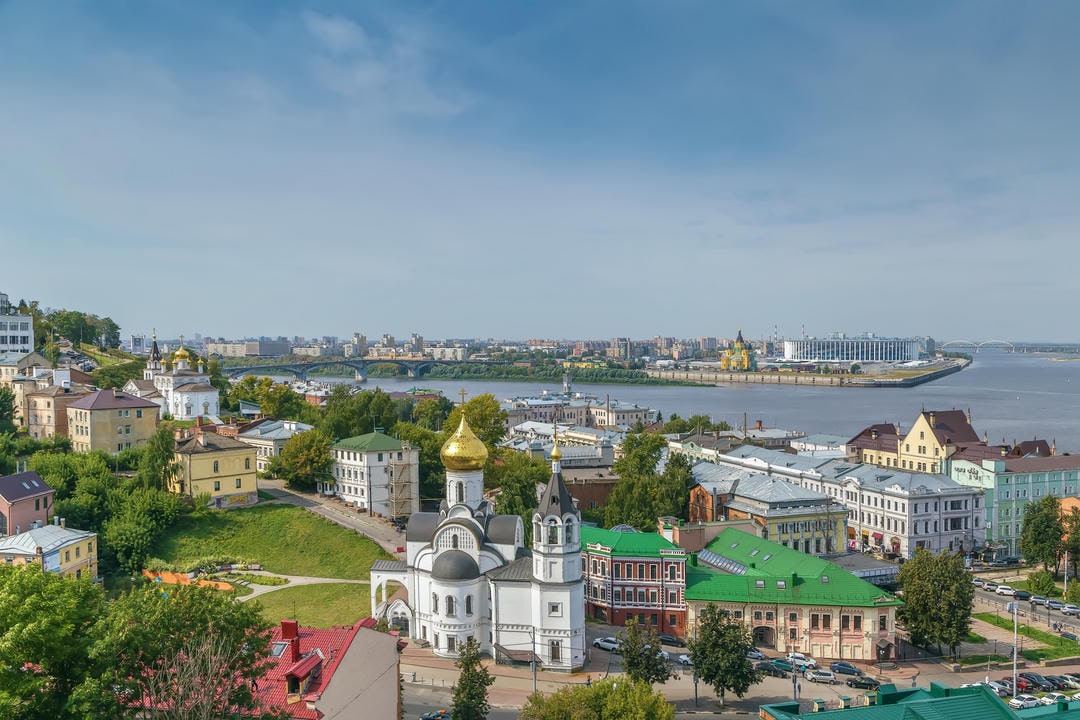
Kazan is the capital of Tatarstan and one of Russia’s most culturally diverse cities. Known for its harmonious blend of Russian and Tatar cultures, Kazan offers visitors a unique perspective on multiculturalism within Russia.
Historical Legacy
Founded over 1,000 years ago, Kazan played a crucial role in shaping regional history. It was once part of the Golden Horde before becoming an influential center under Ivan IV (Ivan the Terrible), who conquered it in 1552. Today, Kazan is celebrated for its historical resilience and cultural richness.
Architectural Wonders
The Kazan Kremlin—a UNESCO World Heritage Site—is a must-see landmark featuring stunning structures like the Qol Sharif Mosque and Annunciation Cathedral. These architectural gems symbolize Kazan’s dual heritage as both Islamic and Orthodox Christian influences converge.
Vibrant Culture
Kazan is renowned for its festivals celebrating music, arts, and sports. It hosted events during Russia’s FIFA World Cup in 2018 and continues to attract international visitors with its dynamic cultural offerings.
In conclusion, Russia’s largest cities offer a captivating glimpse into the country’s rich history, diverse culture, and economic prowess. These urban centers, each with its unique character and contributions, play pivotal roles in shaping modern Russia.
Moscow, the capital and largest city, stands as the undisputed heart of the nation. With a population of over 13.1 million as of January 1, 2024, it continues to grow, attracting people from across Russia and beyond. As the political, economic, and cultural epicenter, Moscow showcases Russia’s blend of historical grandeur and modern ambition, from the iconic Red Square and Kremlin to the towering skyscrapers of Moscow City.
St. Petersburg, the second-largest city with a population of about 5.4 million, holds its place as Russia’s cultural capital. Founded by Peter the Great in 1703, it served as the imperial capital for two centuries. Today, it remains a major port city and transportation hub, connecting Russia to the Baltic Sea and beyond. Its world-renowned museums, including the Hermitage, and stunning architecture make it a top tourist destination.
Novosibirsk, the third-largest city and the most populous in Asian Russia, represents the country’s scientific and technological prowess. Located in the Siberian Federal District, it serves as a crucial link between European Russia and the vast Siberian region.
Yekaterinburg, the fourth-largest city with about 1.5 million residents, straddles the border between European and Asian Russia. It has transformed from its origins as a mining and metallurgical center to become a hub for science, research, and education. The presence of the Urals branch of the Russian Academy of Sciences underscores its importance in Russia’s academic landscape.
Nizhny Novgorod, the fifth-largest city, boasts a population of about 1.25 million. Situated at the confluence of the Oka and Volga rivers, it has evolved from a historical trade center to a modern industrial powerhouse, particularly in automotive manufacturing. Its strategic location and extensive rail system continue to make it a vital transportation hub.
Kazan, the capital of Tatarstan and sixth-largest city in Russia, exemplifies the country’s cultural diversity. With a population of about 1.26 million, it showcases a harmonious blend of Russian and Tatar cultures. Its economic significance is rooted in traditional industries like leatherworking and modern sectors such as oil refining and chemical production.
These cities, along with others like Novosibirsk, reflect Russia’s ongoing urbanization trend. As of 2024, approximately 109 million Russians, or about three-quarters of the country’s population, lived in urban areas. This shift towards city living has been accompanied by economic development, cultural enrichment, and technological advancement.
Each of these metropolises contributes uniquely to Russia’s national identity and global standing. From Moscow’s political clout to St. Petersburg’s cultural treasures, from Yekaterinburg’s industrial might to Kazan’s multicultural harmony, these cities embody the diversity and dynamism of modern Russia. As the country continues to evolve, these urban centers will undoubtedly play crucial roles in shaping its future, serving as beacons of innovation, culture, and economic growth in the vast Russian landscape.
